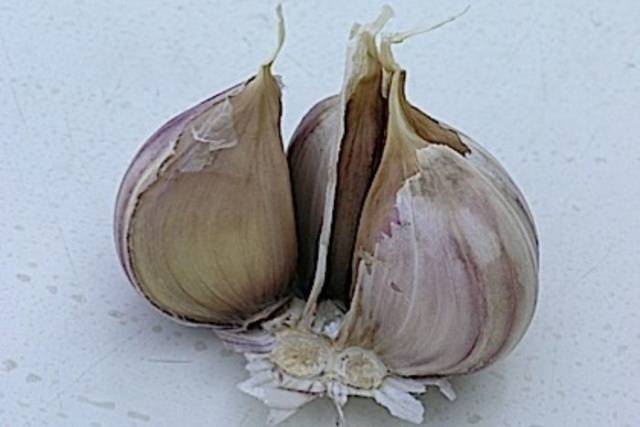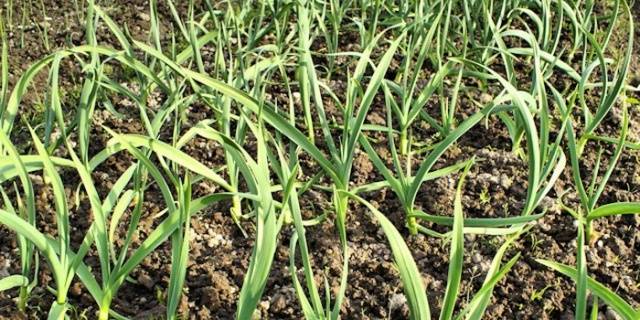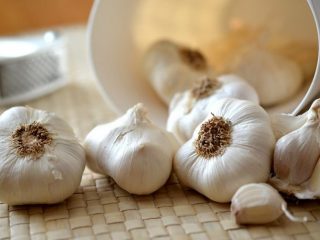Content
The pungent taste and peculiar pungent smell of garlic cannot be confused with anything. They are explained by the presence of sulfur compounds, which kill harmful microorganisms, and phytoncides, which enhance this property. Often, when taking medications, we do not even suspect that they are made from garlic, for example, Allohol, which is stored in every medicine cabinet.
Do you know which vegetable contains the most sugar? The answer may surprise anyone, because it’s garlic, and we don’t feel sweetness solely because of the large amount of essential oils. It contains up to 27% of various polysaccharides, while for sugar beets this figure usually does not exceed 20%. Most often, we use the vegetable as a seasoning for salads, first or second courses, and it is present in our diet all year round. Question how store garlic for the winter, relevant for every housewife.
What determines the keeping quality of garlic?
Along with root vegetables - potatoes, beets, carrots and cabbage, garlic is a vegetable with a long shelf life. This means that it can be stored under optimal conditions until the next harvest.
Choosing garlic for planting
It is necessary to distinguish between winter and spring varieties. Strictly speaking, this division is quite arbitrary, since any garlic can be planted both in spring and before winter.
Spring varieties
They reproduce only by cloves. They do not produce either seeds or aerial bulbs located on peduncles, since they are simply devoid of peduncles. Garlic planted in spring is stored better, and this is perhaps its main advantage over winter garlic. Otherwise, spring varieties lose out, since their heads are smaller and consist of two rows of small cloves, which no housewife likes to peel.
Winter varieties
Depending on the region, planting winter garlic begins at the end of August in the north and continues until November in the south. It is propagated by cloves and aerial bulbs growing on the peduncle instead of seeds. Flower shoots are broken out as early as possible, this increases the yield by 20-25% and increases the shelf life of the heads.
Growing conditions
When cultivating garlic, try not to overuse fertilizers. On alkaline, loose, well-filled soils with organic matter, you don’t need to feed it at all. An excess of nitrogen fertilizers is especially undesirable, as they provoke rotting and shorten the shelf life.
The plant does not like a lot of rain and excessively hot summers. We cannot influence the weather, but we can reduce the temperature by shading with a special net and reduce or stop watering.
Preparation for storage
Creating conditions for garlic storage begins at harvest time. You can’t just dig up the heads at a time convenient for you and expect that they won’t start to dry out in the middle of winter.
When to Harvest
It is impossible to name a specific harvest time. It depends on many factors:
- planting dates;
- climate zone;
- weather factors;
- soils;
- illumination of the area.
It is impossible to store dug garlic well ahead of time. It will not do him any good to remain in the ground until the tops dry out completely. Typically, yellowing lower leaves serve as a signal for harvesting. It’s even better to leave two or three arrows for control. It is believed that the heads can be dug out after the shell on the peduncle bursts.
Vegetables stop watering 2-3 weeks before digging, which must be done in dry weather. For excavation work, it is better to use a pitchfork rather than a shovel.
Preparation for storage
After digging, shake off excess soil from the garlic and place it along with the tops in a warm, dry place. Better yet, tie it in loose bunches and hang it, heads up, in the attic or loft. After one and a half to two weeks, all the nutrients from the aboveground part pass into the cloves, and the foliage dries out completely.
Trim the roots and remove excess husks. If you are not going to store the garlic in a braid, trim tops, keeping the stump 2-3 cm long. Dry it for another week in a cool room with good ventilation.
Select intact heads without damage for storage. The rest should be used as soon as possible.
It is better to store the harvest by holding the bottom and tip of the stump just a little over the flame of a candle.
Storage conditions
Before we figure out how to preserve garlic until spring, let's look at the necessary conditions:
- Temperature. Winter varieties are already difficult to save from germination or drying out in the middle of winter; they can be stored for the longest time at 10-12 degrees. Spring crops are successfully stored at room conditions or at temperatures from 0 to 3 degrees Celsius.
- Humidity. Onions and garlic need to be stored at a humidity of up to 80%, which distinguishes them from other vegetables.
- Light stimulates the germination of cloves; its access should be limited.
How to properly store garlic? It is necessary to create suitable conditions, the main thing is:
- prevent moisture loss so that the heads do not dry out:
- prevent garlic cloves from sprouting;
- create an environment that prevents the development of pathogens.
Storage methods
Every housewife knows how to preserve garlic for the winter. Our task is to preserve the heads for as long as possible, despite the likely lack of optimal conditions, especially in urban areas. apartment with an unglazed balcony. At least until the New Year, or even better until the new harvest grows.
Favorable storage conditions
There are many ways to store garlic in winter. Let's talk about the most popular ones.
- Scattered on the shelves. The heads are laid out in a layer of no more than 15 cm. Suitable for large storage areas.
- Wooden or cardboard boxes. It differs from the previous storage method only in its compact placement.
- Nets or nylon stockings. Bags hung on hooks do not take up much space. In a city apartment, such garlic will quickly dry out.
- Braids or loose buns. With this storage, there is no need to trim the tops after drying. You can’t keep such beauty at home - it will dry out, and quite quickly.Before tying garlic, think about where and under what conditions you will store it.
To prevent the braid from falling apart, weave a strong rope or twine into it. - Glass jars. Perhaps this is the best storage method for a city apartment. Simply place the prepared heads in a clean jar and place them on the bottom shelf of your cabinet.
- Plastic containers with holes. Improvement of the previous method.
Where is the best place to store garlic, the biologist advises:
- Paraffin. Melt store-bought candles and lower the prepared heads into the hot mixture for 2-3 seconds. They can be stored in almost any conditions after drying. Thanks to paraffin, the cloves do not dry out and are protected from waterlogging and uncomfortable temperatures.
- Fridge. Garlic cannot be stored in such conditions for a long time, but sometimes there is simply no other choice. At least don’t put the heads in the vegetable drawer; it’s better to place them on the doors.
- In flour.
- In the ash.
You may come across advice to store peeled cloves in calcined sunflower oil, sometimes even with the addition of iodine. The method is certainly interesting. But this is more a method of preparing aromatic oil, rather than storing garlic in winter conditions.
Unfavorable storage conditions
Often the crop dries out or germinates before the New Year. This is due to unsuitable storage conditions, which are important to be aware of.
- In salt. Unfortunately, this storage method is used quite often, but without success. Salt has the remarkable property of drawing moisture from the surrounding space. Putting garlic in it and waiting for it not to dry out is unreasonable.
- In a refrigerator. Long-term storage of heads in a refrigerator is impossible.
- In sealed bags or cling film. On the one hand, moisture is saved, and on the other, released from vegetables, it settles on the inside of the polyethylene in the form of condensation. This leads to rotting of the heads.
- Separate cloves. Is it possible to store garlic by cutting it into slices? Of course not. It will dry out or germinate very quickly, depending on the humidity of the environment.
Dried garlic
How to store garlic in a tiny apartment or in the absence of suitable conditions? Some of the heads can be dried. Separate them into cloves, peel and rinse with cold water. Cut large ones into 2-3 pieces, place on a baking sheet and dry in the oven at 60 degrees. When ready, the cloves will be fragile but elastic. Grind them with a blender or coffee grinder and store in a closed glass jar.
When drying food, a conventional oven should be left slightly open. In an oven equipped with a convector, the temperature should be increased by 15 degrees (up to 75), and the door should be closed.
Freezing garlic
To store garlic at home, you can chop it and freeze it. See how they do it:
Conclusion
As you can see, there are many ways to store garlic. It is important to choose it correctly and adapt it to your conditions.


























